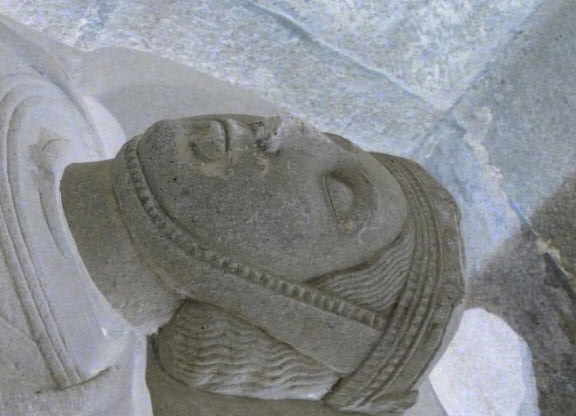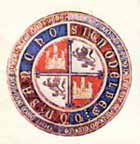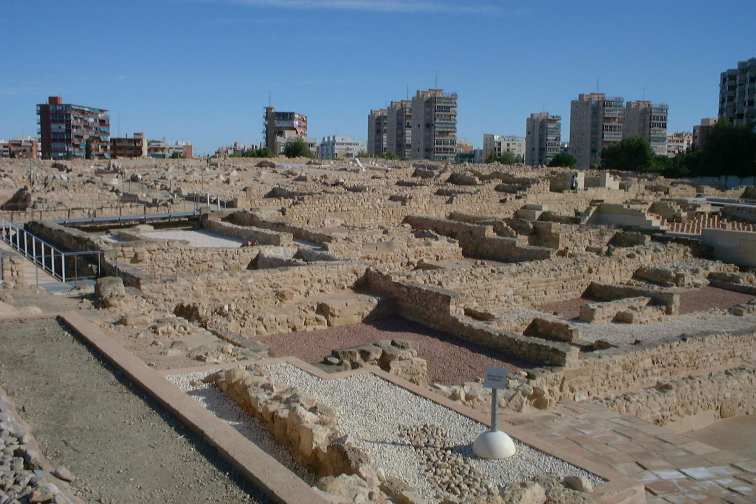|
Violant Of Aragon
Violant or Violante of Aragon, also known as Yolanda of Aragon (8 June 1236 – 1301), was Queen consort of Castile and León from 1252 to 1284 as the wife of King Alfonso X of Castile. Life Violant was born in Zaragoza, the daughter of King James I of Aragon (1213–1276) and his second wife, Violant of Hungary (ca.1215-1253).Elena Woodacre, ''Queenship in the Mediterranean: Negotiating the Role of the Queen in the Medieval and Early Modern Eras'', (Palgrave Macmillan, 2013), 52. Her maternal grandparents were Andrew II of Hungary and Yolanda de Courtenay.''Reassessing the Roles of Women as 'Makers' of Medieval Art and Architecture'', ed. Theresa Martin, (Brill, 2012), 1089. In January 1249, Violant married King Alfonso X of Castile at Burgos, who before his marriage, had a romantic relationship with Mayor Guillén de Guzmán who bore to him an illegitimate daughter Beatrice. Due to Violant's young age, she was unable to get pregnant for several years. Alfonso came to b ... [...More Info...] [...Related Items...] OR: [Wikipedia] [Google] [Baidu] |
Queen Consort Of Castile
This is a list of the queens consort and kings consort of the Kingdom of Castile, and later, Crown of Castile. ''It is, in part, a continuation of the list of Asturian royal consorts and the list of Leonese royal consorts''. Countesses Banu Mamaduna Banu Ansúrez Banu Mamaduna Queens and Kings House of Jiménez House of Ivrea House of Trastámara House of Habsburg At 1556, the union of the Spanish kingdoms is generally called Spain and Mary I of England (second wife of Philip II of Spain, Philip II) is listed as the first Royal Consorts of Spain, Queen consort of Spain. See also *List of Castilian monarchs *List of Aragonese consorts *List of Asturian consorts *List of Galician consorts *List of Hispanic consorts *List of Leonese consorts *List of Navarrese consorts *List of Spanish consorts Notes Sources * * {{DEFAULTSORT:List Of Castilian Consorts Queens consort of Castile, Lists of queens, Castilian Queen Consorts, List of Lists of countesses ... [...More Info...] [...Related Items...] OR: [Wikipedia] [Google] [Baidu] |
Navarre
Navarre ( ; ; ), officially the Chartered Community of Navarre, is a landlocked foral autonomous community and province in northern Spain, bordering the Basque Autonomous Community, La Rioja, and Aragon in Spain and New Aquitaine in France. The capital city is Pamplona (). The present-day province makes up the majority of the territory of the medieval Kingdom of Navarre, a long-standing Pyrenean kingdom that occupied lands on both sides of the western Pyrenees, with its northernmost part, Lower Navarre, located in the southwest corner of France. Navarre is in the transition zone between the green Cantabrian Coast and semi-arid interior areas and thus its landscapes vary widely across the region. Being in a transition zone also produces a highly variable climate, with summers that are a mix of cooler spells and heat waves, and winters that are mild for the latitude. Navarre is one of the historic Basque provinces: its Basque features are conspicuous in the north, but vi ... [...More Info...] [...Related Items...] OR: [Wikipedia] [Google] [Baidu] |
Rome
Rome (Italian language, Italian and , ) is the capital city and most populated (municipality) of Italy. It is also the administrative centre of the Lazio Regions of Italy, region and of the Metropolitan City of Rome. A special named with 2,746,984 residents in , Rome is the list of cities in the European Union by population within city limits, third most populous city in the European Union by population within city limits. The Metropolitan City of Rome Capital, with a population of 4,223,885 residents, is the most populous metropolitan cities of Italy, metropolitan city in Italy. Rome metropolitan area, Its metropolitan area is the third-most populous within Italy. Rome is located in the central-western portion of the Italian Peninsula, within Lazio (Latium), along the shores of the Tiber Valley. Vatican City (the smallest country in the world and headquarters of the worldwide Catholic Church under the governance of the Holy See) is an independent country inside the city boun ... [...More Info...] [...Related Items...] OR: [Wikipedia] [Google] [Baidu] |
Valladolid
Valladolid ( ; ) is a Municipalities of Spain, municipality in Spain and the primary seat of government and ''de facto'' capital of the Autonomous communities of Spain, autonomous community of Castile and León. It is also the capital of the province of Valladolid. It has a population of 300,618 people (2024 est.). The city is located roughly in the centre of the northern half of the Iberian Peninsula's Meseta Central, at the confluence of the Pisuerga River, Pisuerga and Esgueva rivers before they join the Duero, surrounded by winegrowing areas. The area was settled in pre-Roman times by the Celtic Vaccaei people, and then by Ancient Rome, Romans themselves. The settlement was purportedly founded after 1072, growing in prominence within the context of the Crown of Castile, being endowed with fairs and different institutions such as a collegiate church, University of Valladolid, University (1241), Court (royal), Royal Court and Royal Audiencia and Chancillería of Valladolid, C ... [...More Info...] [...Related Items...] OR: [Wikipedia] [Google] [Baidu] |
Ferdinand IV Of Castile
Ferdinand IV of Castile (6 December 1285 – 7 September 1312) called the Summoned (''el Emplazado''), was King of Castile and King of León, León from 1295 until his death. Ferdinand's upbringing and personal custody was entered to his mother Queen María de Molina, however, he was tutored by his granduncle Henry of Castile the Senator. Queen María attempted to placate the nobility, confronted her son's enemies, and repeated prevented her son from being dethroned. He faced the insubordination of the nobility, led at numerous times by his uncle John of Castile, Lord of Valencia de Campos, and by Juan Núñez II de Lara, who were sometimes supported by another royal relative, Juan Manuel, Prince of Villena. Like his predecessors on the throne, Ferdinand IV continued the Reconquista and, although he failed to conquer Algeciras in 1309, he captured the city of Gibraltar that same year. In 1312 the city of Alcaudete was also conquered. During the Cortes of Valladolid of 1312, he p ... [...More Info...] [...Related Items...] OR: [Wikipedia] [Google] [Baidu] |
Peter III Of Aragon
Peter III of Aragon (In Aragonese, ''Pero''; in Catalan, ''Pere''; in Italian, ''Pietro''; November 1285) was King of Aragon, King of Valencia (as ), and Count of Barcelona (as ) from 1276 to his death. At the invitation of some rebels, he conquered the Kingdom of Sicily and became King of Sicily (as ) in 1282, pressing the claim of his wife, Constance II of Sicily, uniting the kingdom to the crown. Youth and succession Peter was the eldest son of James I of Aragon and his second wife Violant of Hungary. On 13 June 1262, Peter married Constance II of Sicily, daughter and heiress of Manfred of Sicily. During his youth and early adulthood, Peter gained a great deal of military experience in his father's wars of the ''Reconquista'' against the Moors. In June 1275, Peter besieged, captured, and executed his rebellious half-brother Fernando Sánchez de Castro at Pomar de Cinca. On his father's death in 1276, the lands of the Crown of Aragon were divided amongst his two sons. ... [...More Info...] [...Related Items...] OR: [Wikipedia] [Google] [Baidu] |
Philip III Of France
Philip III (1 May 1245 – 5 October 1285), called the Bold (), was King of France from 1270 until his death in 1285. His father, Louis IX, died in Tunis during the Eighth Crusade. Philip, who was accompanying him, returned to France and was anointed king at Reims in 1271. Philip inherited numerous territorial lands during his reign, the most notable being the County of Toulouse, which was annexed to the royal domain in 1271. With the Treaty of Orléans, he expanded French influence into the Kingdom of Navarre and following the death of his brother Peter during the Sicilian Vespers, the County of Alençon was returned to the crown lands. Following the Sicilian Vespers, Philip led the Aragonese Crusade in support of his uncle. Initially successful, Philip, his army racked with sickness, was forced to retreat and died from dysentery in Perpignan in 1285 at the age of 40. He was succeeded by his son Philip IV. Early life Philip was born in Poissy on 1 May 1245, the s ... [...More Info...] [...Related Items...] OR: [Wikipedia] [Google] [Baidu] |
Blanche Of France (1253–1323)
Blanche of France (French: ''Blanche de France'') (1253–1323) was a daughter of King Louis IX of France and Margaret of Provence. Biography Blanche was born in 1253 in Jaffa, County of Jaffa and Ascalon during the Seventh Crusade led by her father, Louis IX of France. In November 1269, she married Ferdinand de la Cerda, Infante of Castile, eldest son of Alfonso X of Castile and Violant of Aragon. They had: * Alfonso (1270–1333), who married Mahaut, daughter of John I of Brienne, Count of Eu. They had four sons and three daughters. * Ferdinand (1275–1322), who married Juana Núñez de Lara, called "la Palomilla", Lady of Lara and Herrera, daughter of Juan Núñez I de Lara and Teresa Álvarez de Azagra. They had one son and three daughters. One daughter, Blanca de La Cerda y Lara, was the mother-in-law of King Henry II of Castile. Ferdinand predeceased his father in 1275 at Ciudad Real. Blanche and Ferdinand's sons did not inherit the throne of their grandfather, ... [...More Info...] [...Related Items...] OR: [Wikipedia] [Google] [Baidu] |
Ferdinand De La Cerda, Lord Of Lara
Ferdinand is a Germanic name composed of the elements "journey, travel", Proto-Germanic , abstract noun from root "to fare, travel" (PIE , "to lead, pass over"), and "courage" or "ready, prepared" related to Old High German "to risk, venture." The name was adopted in Romance languages from its use in the Visigothic Kingdom. It is reconstructed as either Gothic or . It became popular in German-speaking Europe only from the 16th century, with Habsburg rule over Spain. Variants of the name include , , , and in Spanish, in Catalan, and and in Portuguese. The French forms are , '' Fernand'', and , and it is '' Ferdinando'' and ''Fernando'' in Italian. In Hungarian both and are used equally. The Dutch forms are and ''Ferry''. There are numerous short forms in many languages, such as the Finnish . There is a feminine Spanish, Portuguese, and Italian form, . Royalty Aragón/León/Castile/Spain *Ferdinand I of Aragon (1380–1416) the Just, King in 1412 * Ferd ... [...More Info...] [...Related Items...] OR: [Wikipedia] [Google] [Baidu] |
Alfonso De La Cerda
Alfonso de la Cerda, (Valladolid 1270 - Ávila 1333), called "the Disinherited", was the elder son of Ferdinand de la Cerda and his wife Blanche of France, and was a grandson of Alfonso X of Castile. Alfonso and his brother Fernando were candidates for the Castilian-Leonese crown during the reigns of Sancho IV of Castile, Ferdinand IV of Castile and Alfonso XI of Castile. In 1331, Alfonso renounced his rights and swore allegiance to Alfonso XI of Castile. Biography When Ferdinand de la Cerda died in 1275, Alfonso's grandmother, Violant of Aragon, took him and his newborn brother Fernando to Aragon. They were kept there 13 years in the fortress of Xàtiva. Alfonso's grandfather, King Alfonso X of Castile, established a division of his realm. Sancho was to inherit Castile and Alfonso was to inherit León, according to historian Joaquín Cuevas Aller. After Alfonso X's death in 1284, the Leonese throne was usurped by Sancho, who would reign as Sancho IV. In September 128 ... [...More Info...] [...Related Items...] OR: [Wikipedia] [Google] [Baidu] |
Alicante
Alicante (, , ; ; ; officially: ''/'' ) is a city and municipalities of Spain, municipality in the Valencian Community, Spain. It is the capital of the province of Alicante and a historic Mediterranean Sea, Mediterranean port. The population of the city was 337,482 , the second-largest in the Valencian Community. Toponymy The name of the city echoes the Arabic name ''Laqant'' (), ''al-Laqant'' (اللَّقَنْت) or ''Al-qant'' (), which in turn reflects the Latin ''Lucentum'' and Greek root ''Leuké'' (or ''Leuka''), meaning "white". History The area around Alicante has been inhabited for over 7,000 years. The first tribes of hunter-gatherers moved gradually from Central Europe between 5000 and 3000 BC. Some of the earlier settlements were made on the slopes of Mount Benacantil. By 1000 BC, Ancient Greece, Greek and Phoenician traders had begun to visit the eastern coast of Spain, establishing small trading ports and introducing the native Iberian tribes to the alpha ... [...More Info...] [...Related Items...] OR: [Wikipedia] [Google] [Baidu] |
Beatrice Of Castile (1242–1303)
Beatrice of Castile (1242/1244 – 27 October 1303), an illegitimate daughter of Alfonso X of Castile and his mistress Mayor Guillén de Guzmán, was the second Queen consort of Afonso III of Portugal. Biographical sketch She was probably born shortly before 31 December 1244 when her father, King Alfonso, "with the consent of his father", donated Elche to his daughter Beatrice and all the children that he had with Mayor Guillén de Guzmán. As part of his strategy to reach an agreement with the Kingdom of Portugal on the sovereignty of the Algarve, King Alfonso X offered his daughter Beatrice in marriage to King Afonso III of Portugal. The wedding was celebrated in 1253. Under the agreement, the king of Castile promised that we would cede all the rights he held in the Algarve to the first male offspring of Alfonso III and Beatrice when the child was seven years old. The Portuguese nobility considered this marriage "humiliating for the King of Portugal". Much more serious ... [...More Info...] [...Related Items...] OR: [Wikipedia] [Google] [Baidu] |






